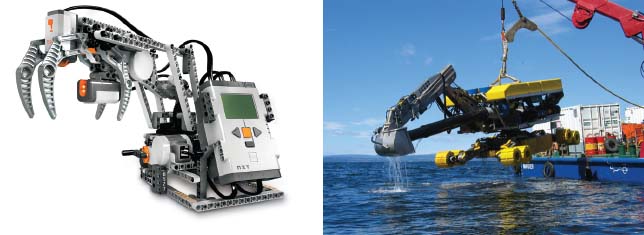Putting Smarts Into Design
The growing need to include sensors and embedded systems in products is transforming the product design process in terms of complexity and methodology.
Latest News
March 1, 2010
By Tom Kevan
Two of the leading hackneyed terms in today’s technology lexicon are “smart” and “intelligent.” Everything from smart phones to washing machines and automobiles to satellites has some degree of intelligence that enables semiautonomous or autonomous operation. But these well-worn terms are the banners of a revolution that has been a long time in the making. Designers have been incorporating sensors and embedded systems in their designs to give products “smarts” for some time. The quantum shift transforming the design process, however, is the scale of the presence and importance of these devices.
 Most robotic systems have four distinct areas of development—sensing/perception, high-level control algorithms, motor control/actuation, and an optional UI. One example is the Spider remotely operated underwater vehicle from Nexans for oil and gas applications. |
Moore’s law has removed the economic obstacles impeding their deployment. The truth of the matter is that sensors and embedded systems are no longer optional. In fact, the trend is to increase the number of these devices—as well as firmware capability—raising the bar on functionality and performance to differentiate products and increase their competitiveness.
Complexity
Including sensors and embedded systems has shot product and design complexity through the roof. Engineers must select the right mix of sensors, processors, and firmware to bring down cost and increase system performance and energy efficiency while the bill of materials grows.
The addition of these technological elements introduces a daunting range of design considerations. And these must now be addressed upfront, early in the development process, to avoid rework and problems downstream. The new mix of technologies also requires that all engineering disciplines collaborate on the process.
As embedded systems are required to translate sensor data on internal conditions and environmental factors into actionable information that can enhance operational efficiencies, power and memory become critical, further complicating the overall design. And as form factors of all products shrink, designers must fit all these components into smaller packages.
All this increases the number and importance of choices that have to be made in selecting components. Engineers must choose between traditional analog sensors and chip-based digital-sensing devices and the various forms of memory. They must then settle on a power strategy that can involve main line, battery, or energy-harvesting sources. The power-management requirements of the product can force designers to look for sensors and processors that turn on and off quickly and include sleep modes and automatic shutoff capabilities.
Further complicating the design process, communications are no longer limited to simple hard line buses, but instead can include any number of wireless technologies. Engineers must choose from several wireless protocols and weigh the pros and cons of open vs. proprietary architectures. The new communications media also bring into play antennas and signal propagation.
As the complexity of the component mix increases, interactions can determine the success or failure of design projects. “About 50 percent of development projects fail due to poor system architecture validation. Most of the issues are relative to the poor specification of the interfaces,” said Laurent Cherprenet, director of high-tech industry for Dassault Systèmes, “especially the communication between software and electronics.”
To get the most from the hardware, the software design must be tied much more tightly to that of the hardware.
New Methodologies
The growing role of sensors and embedded systems is increasing the complexity of products and their design. As a result, design teams are adopting and cultivating methodologies such as mechatronics and systems engineering.
Products are no longer based on mechanical gears and cams. Instead, they are dominated by digital components and interconnected subsystems, whose functionality is defined by the interdependencies of all components. More than ever, these “smart” technologies reinforce the old adage: The devil is in the details.
Contributing Editor Tom Kevan is based in New Hampshire and is DE’s mechatronics, PLM, and systems expert. Send your comments about this article to [email protected].
Subscribe to our FREE magazine, FREE email newsletters or both!
Latest News
About the Author
DE’s editors contribute news and new product announcements to Digital Engineering.
Press releases may be sent to them via [email protected].






